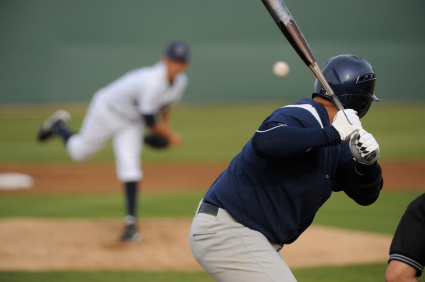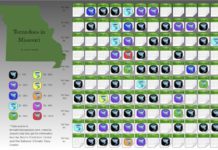One of the most memorable home runs in the St. Louis Cardinals’ baseball history is David Freese’s out of the park hit in the 2011 World Series Game 6. This homerun tied the game in the bottom of the ninth inning and inspired the team to go onto to win the World Series.

Most people don’t really know how difficult it is to hit a fast ball in the major leagues. Fans look at players like Cardinals’ first baseman Albert Pujols and third baseman Freese, and think that those things come naturally. But it takes a lot of effort, training and even knowledge of physics to hit a major league pitch.
There are various aspects of science in baseball, and both batters and hitters use physics in every at bat. Since major league pitches are so hard to hit, physics is sometimes unknowingly used to make it easier to hit.
According to Major League Baseball, the pitcher’s mound is 60 feet, 6 inches away from home plate. It takes the ball about 0.4 second to travel this distance. This is significant, because it emphasizes how fast a reaction time is needed to hit a homerun.
Dr. Cynthia Bir, a Professor of Biomedical Engineering at Wayne State University in Detroit, MI, determined that as the ball leaves the pitcher’s hand, it takes 0.1 second for the hitter just to locate the ball. In this period of time, the ball has already traveled 12 feet. The batter then takes seven hundredths of a second to calculate speed, spin and trajectory. In this time the ball has already traveled another 10 feet. It then takes the batter 0.017 second for the brain and body to work together to execute a swing. This means that the batter has about 0.09 second to make the decision whether to swing or not. If the hitter hesitates for even a thousandth of a second, it could result in a foul ball or a strike.
The laws of motion that apply to hitting the ball are Newton’s Second Law— the acceleration of an object as produced by a net force is directly proportional to the magnitude of the net force, in the same direction as the net force, and inversely proportional to the mass of the object. This, simply stated, means that the object’s acceleration (a) is dependent on the net force (F) and mass (m) of the object. (Physicists write this mathematically as F = ma).
Another aspect of physics in baseball is the optimal angle at which the ball must be hit. According to Brian Schutzenhofer, a physics teacher at Hazelwood East High School, the best angle at which to hit the ball is when the bat is at a 45°. This is the angle at which the ball will travel farthest, thus resulting in a homerun.
Pitchers are another thing all together. A pitcher uses his body movement to execute a pitch. Exploratorium.edu, which is the website for the science, art, and human perception museum in San Francisco, states that pitchers use something called the sequential summation of movement. According to an article written by David Barker, a physics professor at Austin College in Sherman, TX, this is the momentum of body to ball. In this action, the largest body mass moves first, then so on, according to decreasing body mass. To do that, the pitcher first drives his legs, hips, shoulders, arms, wrists and finally the fingers. This whip-like action gives the pitcher the ability to get the most momentum and accuracy on the ball. Pitchers transfer the momentum from their body into the ball. This is why they use the windup that is so familiar to us. Taking a forward step also makes throwing the ball much easier, which is why the pitcher starts behind the pitching rubber and ends up thrusting his entire body forward. According to Exploratorium.edu, the average major league pitcher can throw a ball at 95 miles per hour.
| Related stories: Baseball Bats Become Weapons; Playing in Blood, Sweat, and Saliva |
Thus, if Pujols, well know home run hitter, would have pitches thrown at him a fraction of a second late, he wouldn’t be as famous as he is today. Pujols changed the whole mood of the 2011 World Series when he hit his legendary three home runs in one night during Game Three. Faleesia Willis

This work is licensed under a Creative Commons Attribution-NonCommercial-NoDerivs 3.0 Unported License

















Great job on citing your works! I Really learned something new from this article, and that’s great since I’m not a baseball fan at all nor have any knowledge on the subject.
Nice work! :smile
I learned alot from this article.
:@@:@@:@@:@@:@@:@@:@@:@@:@@ :@@ :@@ :@@ :@@ :@@ :@@ :@@ :@@ :@@ :@@ :@@ :@@ :@@ :@@ :@@ :@@ :@@ :@@ :@@ :@@ :@@:@@ :erm :congrate :wuwu :wuwu :cried :zzz :shh :why :huh :huh :good :yes :yes :arhh :arhh :shy :flag :smile :erm :@@ :wah :sweat :invite :cried
WOW!! That’s Awesome! :smile :smile
Good job!! Very interesting since I play baseball.
As someone who is very good at hitting i can sad that i learned a lot from your artical that can help me to improve.
great job!!!!!!!!!!!:good
Batters and hitters are the same thing